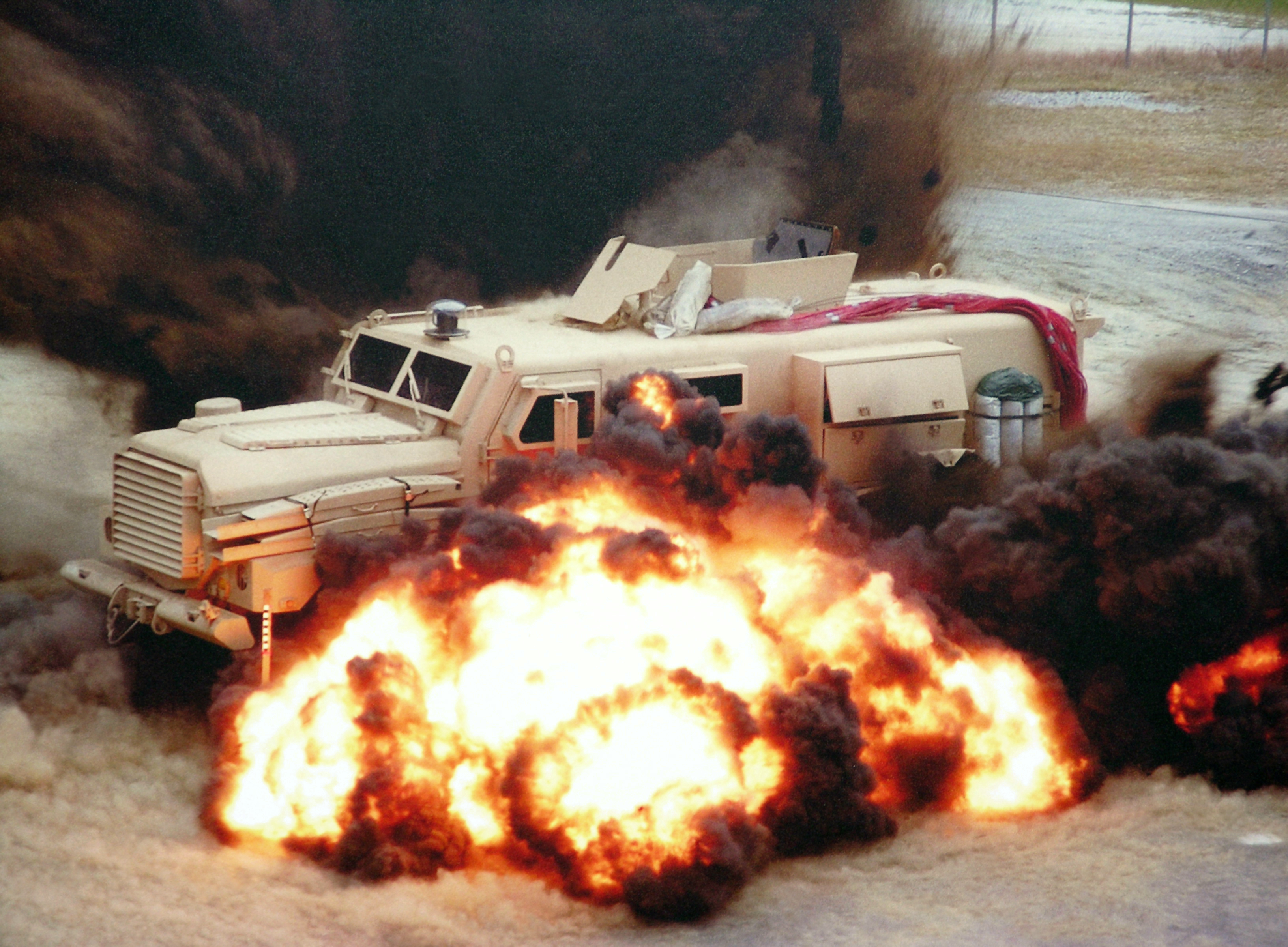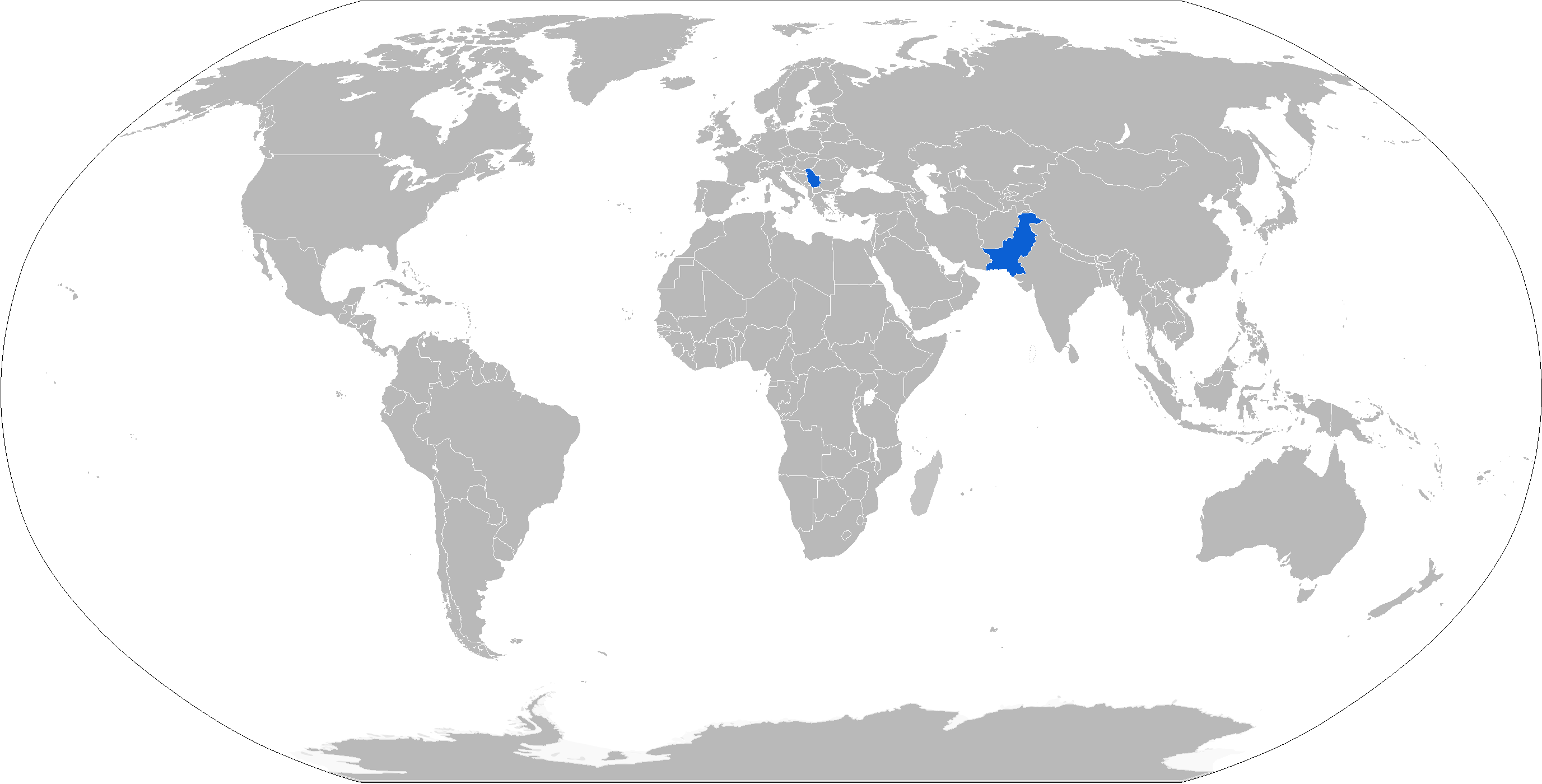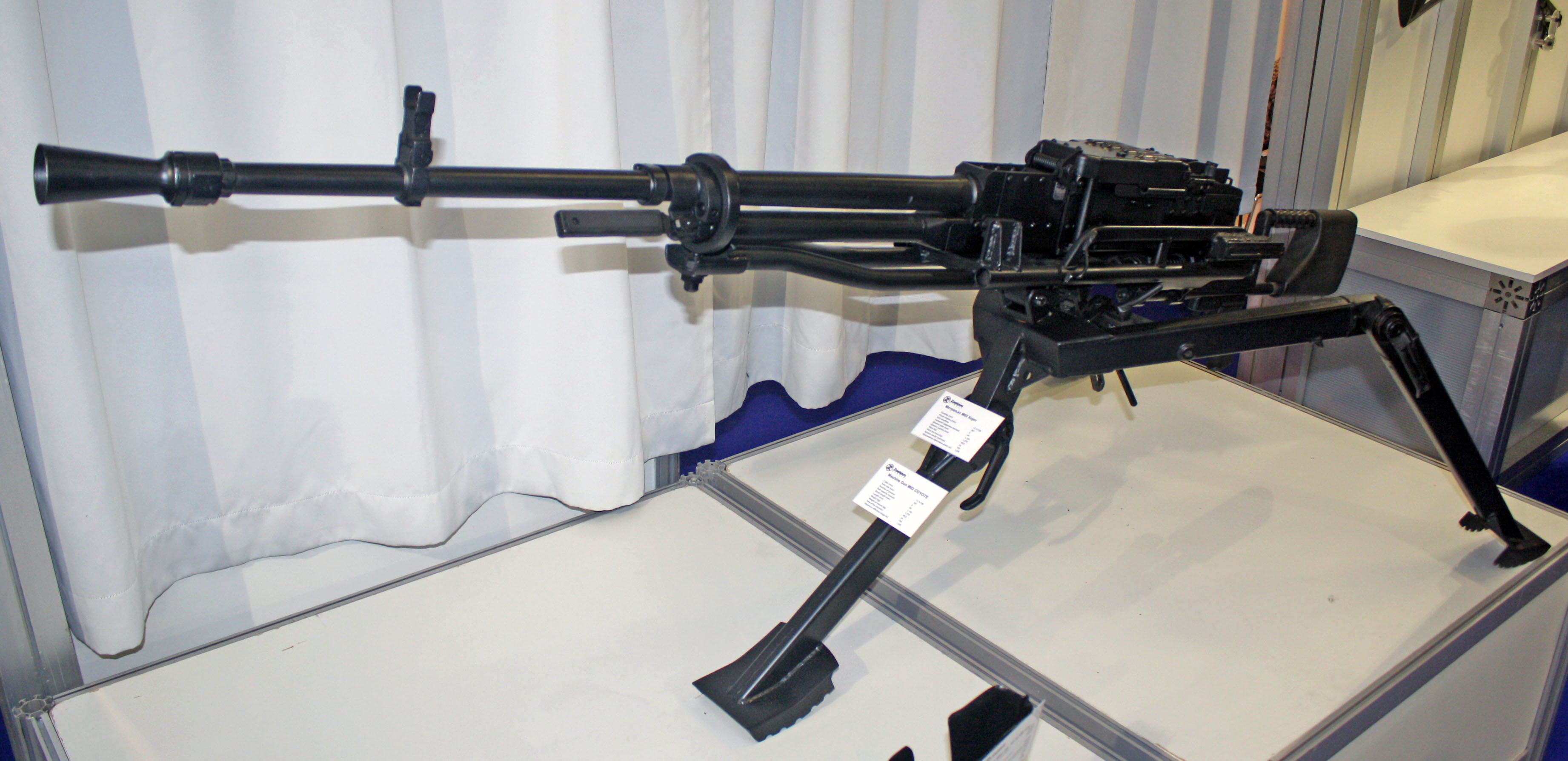|
Lazar BVT
The Lazar BVT is a Serbian mine resistant ambush protected vehicle (MRAP), manufactured by Yugoimport SDPR and named after Prince Lazar Hrebeljanović. It is not in operational use by the Serbian Army, which uses modified version, Lazar 3. Design Lazar is a vehicle conceived for use in urban and rural anti-infantry patrol and transport role, a supplementary vehicle meant to prevent exposure of even basic infantry units to enemy fire as well as to run support of heavier vehicles in convoy situations. The chassis is started as a simple redesign of the TAM-150 truck but evolved to include a completely modified hull, 4×4 and 8×8 configuration, added armor and dozens of structural improvements. Special attention was given to a high acceleration rate, stability (due to high center of gravity), hardiness and reliability in many types of environments (fire, snow, ice, rain, mud etc.). During testing, the vehicle outperformed every parameter except the weight requirement, which was ... [...More Info...] [...Related Items...] OR: [Wikipedia] [Google] [Baidu] |
MRAP
Mine-Resistant Ambush Protected Vehicle (MRAPV), also known as MRAP vehicle, is a type of armoured personnel carrier that is designed specifically to withstand land mines, improvised explosive device (IED) attacks, and ambushes to save troops' lives. Most modern infantry mobility vehicles also have a certain level of MRAP capabilities. History Specialized light armored vehicles designed specifically to resist land mines were first introduced in the 1970s by the Rhodesian Army, and were further developed by South African manufacturers starting in 1974 with the Hippo APC, Hippo armoured personnel carrier, armored personnel carrier (APC).Heitman, Helmoed-Römer. ''South African Armed Forces''. Buffalo Publications 1990. p 44. The first step by the South African Defence Force (SADF) was the Bosvark, a Unimog fitted with a shallow mine-deflecting tub on the chassis to protect the crew. Then came the first generation of purpose-built vehicles, including the Hippo and various other l ... [...More Info...] [...Related Items...] OR: [Wikipedia] [Google] [Baidu] |
AGS-17
The AGS-17 Plamya ( Russian: Пламя; ''Flame'') is a Soviet-designed automatic grenade launcher in service worldwide. Description The AGS-17 is a heavy infantry support weapon designed to operate from a tripod or mounted on an installation or vehicle. The AGS-17 fires 30 mm grenades in either direct or indirect fire to provide suppressive and lethal fire support against soft-skinned or fortified targets. The weapon uses a blowback mechanism to sustain operation. Rounds are fired through a removable (to reduce barrel stress) rifled barrel. The standard metal ammunition drum contains 29 linked rounds. The tripod is equipped with fine levelling gear for indirect fire trajectories. Development Development of the AGS-17 (''Avtomaticheskiy Granatomyot Stankovyi''—Automatic Grenade launcher, Mounted) started in the USSR in 1965 by the OKB-16 design bureau (now known as the KB Tochmash), under the leadership of Alexander F. Kornyakov. This lightweight weapon was to prov ... [...More Info...] [...Related Items...] OR: [Wikipedia] [Google] [Baidu] |
Military Vehicles Introduced In The 2000s
A military, also known collectively as armed forces, is a heavily armed, highly organized force primarily intended for warfare. Militaries are typically authorized and maintained by a sovereign state, with their members identifiable by a distinct military uniform. They may consist of one or more military branches such as an army, navy, air force, space force, marines, or coast guard. The main task of a military is usually defined as defence of their state and its interests against external armed threats. In broad usage, the terms "armed forces" and "military" are often synonymous, although in technical usage a distinction is sometimes made in which a country's armed forces may include other paramilitary forces such as armed police. Beyond warfare, the military may be employed in additional sanctioned and non-sanctioned functions within the state, including internal security threats, crowd control, promotion of political agendas, emergency services and reconstruction, p ... [...More Info...] [...Related Items...] OR: [Wikipedia] [Google] [Baidu] |
Armoured Personnel Carriers Of Serbia
Armour (Commonwealth English) or armor (American English; see spelling differences) is a covering used to protect an object, individual, or vehicle from physical injury or damage, especially direct contact weapons or projectiles during combat, or from a potentially dangerous environment or activity (e.g. cycling, construction sites, etc.). Personal armour is used to protect soldiers and war animals. Vehicle armour is used on warships, armoured fighting vehicles, and some combat aircraft, mostly ground attack aircraft. A second use of the term ''armour'' describes armoured forces, armoured weapons, and their role in combat. After the development of armoured warfare, tanks and mechanised infantry and their combat formations came to be referred to collectively as "armour". Etymology The word "armour" began to appear in the Middle Ages as a derivative of Old French. It is dated from 1297 as a "mail, defensive covering worn in combat". The word originates from the Old French ... [...More Info...] [...Related Items...] OR: [Wikipedia] [Google] [Baidu] |
Lazar (armoured Vehicle)
The LAZAR is a family of multi-role armoured personnel carriers, designed for various applications and missions, designed and developed by Yugoimport-SDPR. There are 3 versions of Lazar family of armoured vehicles: Lazar 1, Lazar 2, and Lazar 3. Lazar 2 Design The Multi-Role Armored Vehicle Lazar 2 8×8 is based on modifications of the concept and the technical solutions implemented on the functional model of Lazar vehicle. These modifications are carried on with the purpose to further harmonize the basic characteristic of the vehicle with contemporary international trends in the development of families of multi-role armored wheel-type vehicles. The concept of the first Lazar vehicle represented a combination of the characteristics of MRAP and MRAV (Multirole Armoured Vehicle) type vehicles, while the Lazar 2 is closer to the MRAV concept first of all because of the introduction of independent suspension, which allows the platform to be customized to different roles. The con ... [...More Info...] [...Related Items...] OR: [Wikipedia] [Google] [Baidu] |
9K35 Strela-10
The 9K35 ''Strela-10'' (; ) is a Soviet highly mobile, short-range surface-to-air missile system. It is visually aimed, and utilizes optical/ infrared-guidance. The system is primarily intended to engage low-altitude threats, such as helicopters. "9K35" is its GRAU designation; its NATO reporting name is SA-13 "Gopher". Development The 9K35 is the successor of the 9K31 Strela-1 and can also use the Strela-1's missiles in place of the 9M37. Development of the 9K37 Strela-10SV system was initiated July 24, 1969. The decision to begin the development of a new non-all-weather system was taken despite the simultaneous development of an all-weather hybrid gun/missile system 2K22 "Tunguska" mainly as an economical measure. It was also seen as advantageous to have a system capable of fast reaction times and immunity to heavy radio-frequency jamming. Rather than being mounted on an amphibious but lightly armoured BRDM chassis like the 9K31, the 9K35 is mounted on a more mobile tracked, ... [...More Info...] [...Related Items...] OR: [Wikipedia] [Google] [Baidu] |
9K11 Malyutka
The 9M14 Malyutka (; "Little one", NATO reporting name: AT-3 Sagger) is a manual command to line of sight (MCLOS) wire-guided anti-tank guided missile (ATGM) system developed in the Soviet Union. It was the first man-portable anti-tank guided missile of the Soviet Union and is probably the most widely produced ATGM of all time—with Soviet production peaking at 25,000 missiles a year during the 1960s and 1970s. In addition, copies of the missile have been manufactured under various names by at least six countries. Although they have been supplanted by more advanced anti-tank guided missiles, the Malyutka and its variants have seen widespread use in nearly every regional conflict since the 1960s and are still kept in large stockpiles and sometimes used to this day by non state actors such as Hezbollah. Development Development began in July 1961 with the government assigning the project to two design teams: Tula and Kolomna. The requirements were: * Vehicle mountable and/or man p ... [...More Info...] [...Related Items...] OR: [Wikipedia] [Google] [Baidu] |
Hispano-Suiza HS
Hispano-Suiza () is a Spanish automotive company. It was founded in 1904 by Marc Birkigt and as an automobile manufacturer and eventually had several factories in Spain and France that produced luxury cars, aircraft engines, trucks and weapons. In 1923, its French luxury car arm became a semi-autonomous partnership with the Spanish parent company. In 1946, the parent company sold all of its Spanish automotive assets to Enasa, a Spanish state-owned vehicle manufacturer, and the French arm continued as an independent aviation engine and components manufacturer under the Hispano-Suiza name. In 1968, Hispano-Suiza was taken over by the aerospace company Snecma, which is now part of the French Safran Group. The relaunch of Hispano Suiza Cars has been made by the same founding family (4th generation of the Suqué Mateu Family), the company is part of the Peralada Group (owned as well by the Suqué Mateu family) in 2019 with a fully-electric 1,119 HP hypercar called Hispano-Suiza ... [...More Info...] [...Related Items...] OR: [Wikipedia] [Google] [Baidu] |
Zastava M02 Coyote
The Zastava M02 Coyote is a 12.7mm heavy machine gun produced by Zastava Arms. The M02 is very similar to the NSV machine gun and Kord machine gun The Kord-12.7 mm heavy machine gun is a Russian design that entered service in 1998 replacing the older NSV machine gun. Externally the weapon resembles the NSV; however, the internal mechanism has been extensively reworked, changing from a h ... in appearance and capability. The M02 can fire over 700 rounds per minute and has a maximum effective range of 2,000 m against ground targets and 1,500 m against airborne targets. Description The primary purpose of the Coyote is neutralization or destruction of living force or light-armoured vehicles on the ground, on water, at distances up to . It can be used for action at air targets. The Coyote has a cradle that is set to a stable tripod. The tripod enables adaptation to various terrains. The machine gun has a pistol trigger mechanism and handgrip and also springs in the stock. These ... [...More Info...] [...Related Items...] OR: [Wikipedia] [Google] [Baidu] |
Zastava M87
The Zastava M87 () is a heavy machine gun produced by Zastava Arms in Yugoslavia and later Serbia. The M87 is based on the Soviet NSV (machine gun), NSV heavy machine gun. It is intended for anti-aircraft duties, but it also used for action against ground and maritime targets at long distances. Users * * * * Former users * * See also *Zastava M84 *Zastava M02 Coyote References External linksOfficial website of Zastava Arms [...More Info...] [...Related Items...] OR: [Wikipedia] [Google] [Baidu] |
Zastava M84
The Zastava M84 is a general-purpose machine gun manufactured by Zastava Arms. It is a gas-operated, air-cooled, belt-fed and fully automatic shoulder-fired weapon. The M84 is a licensed copy of the Soviet Union's PKM, with a few differences such as a differently shaped stock, and a slightly longer and heavier barrel which has slightly different measurements at the gas port and forward of the trunnion in diameter. Variants M84 The M84 is intended for infantry use, against enemy infantry and light vehicles. It is also configured for tripod mounting (like the PKS). M86 The M86 is a tank machine gun, and is designed to mount as a coaxial weapon on M-84 tanks and other combat vehicles. The stock, bipod, and iron sights are omitted from this version, and it includes a heavier barrel and electric trigger, much like the Russian PKMT. Another version, the M86A, is designed for external mounts and can be used dismounted. M84M An improved version of the M84. The changes include a ... [...More Info...] [...Related Items...] OR: [Wikipedia] [Google] [Baidu] |







